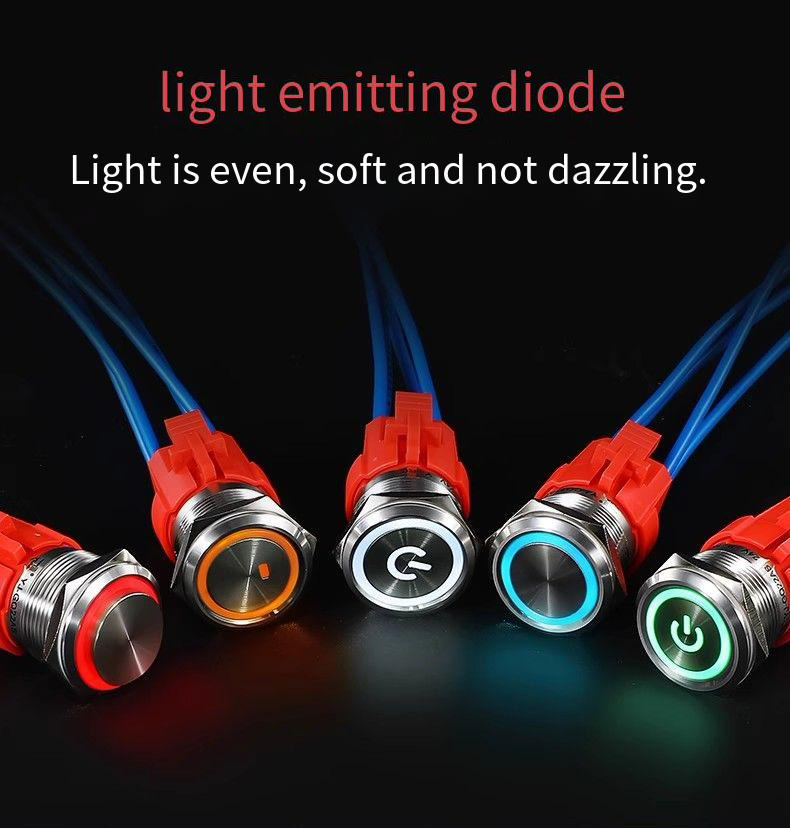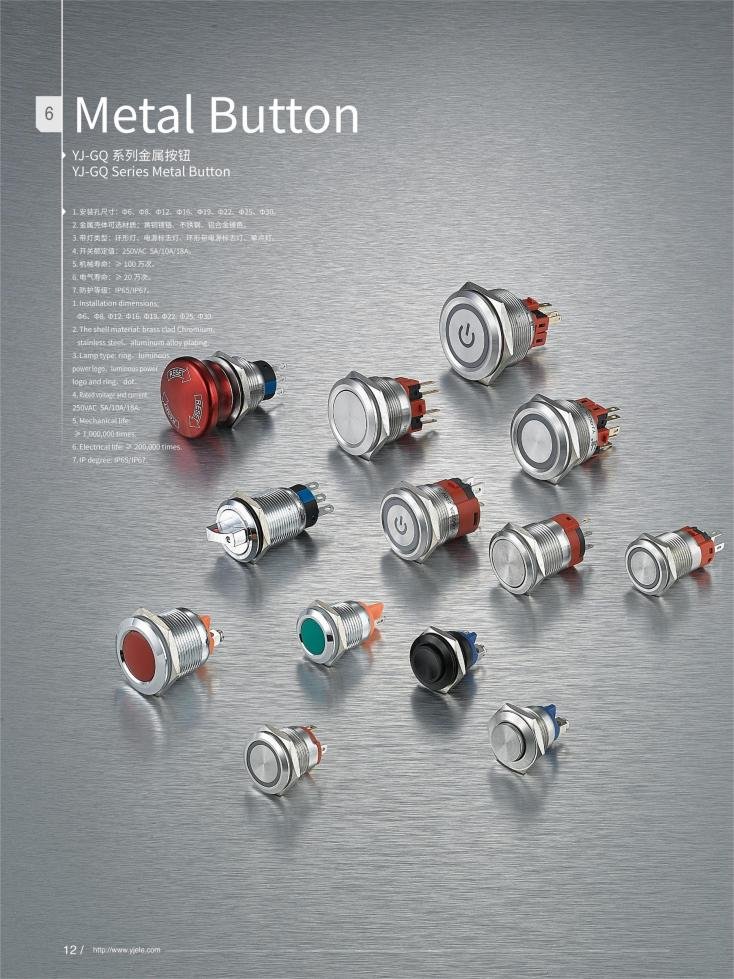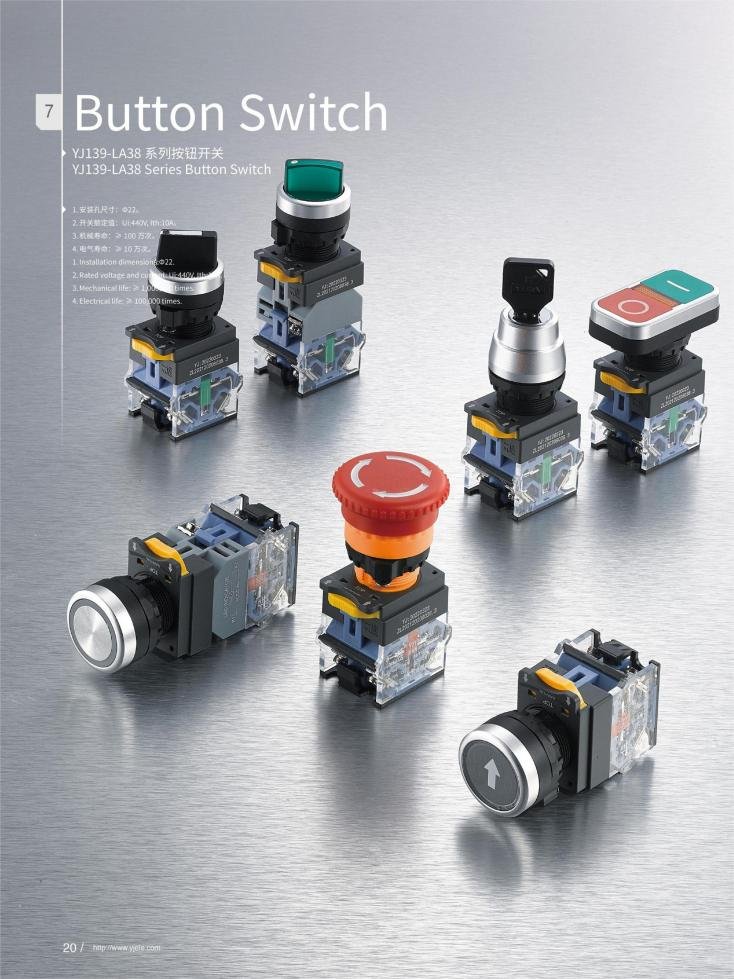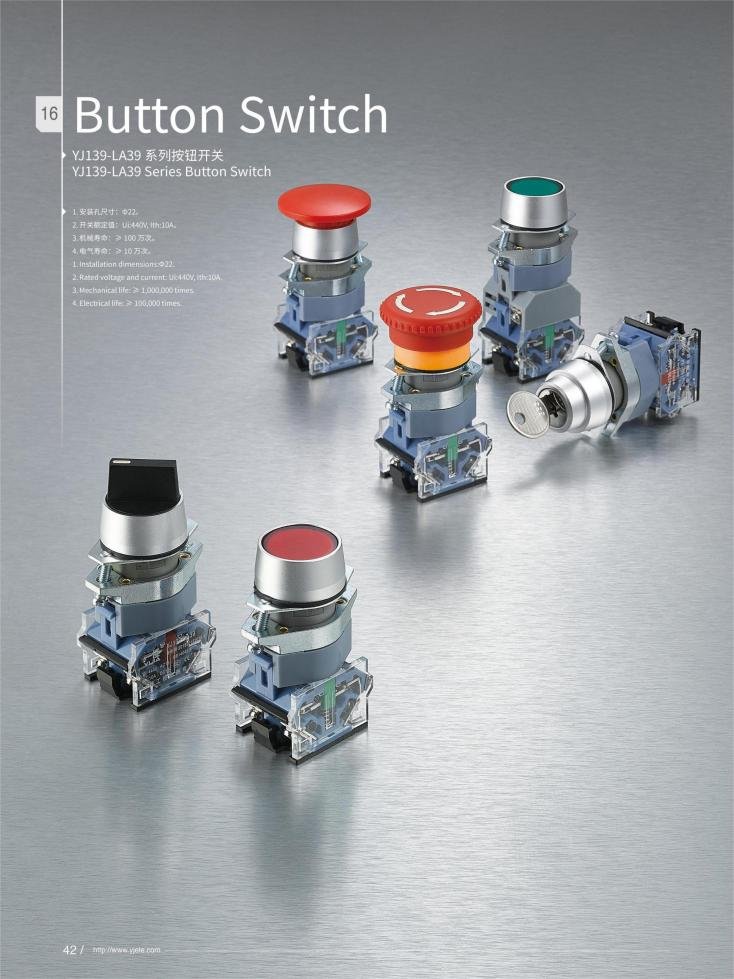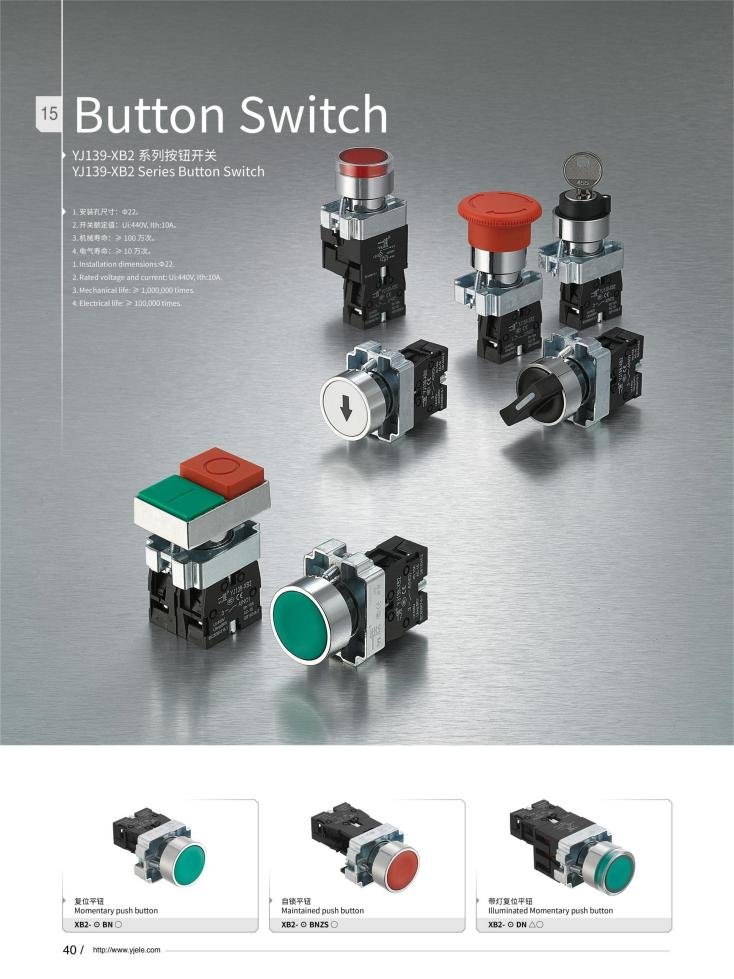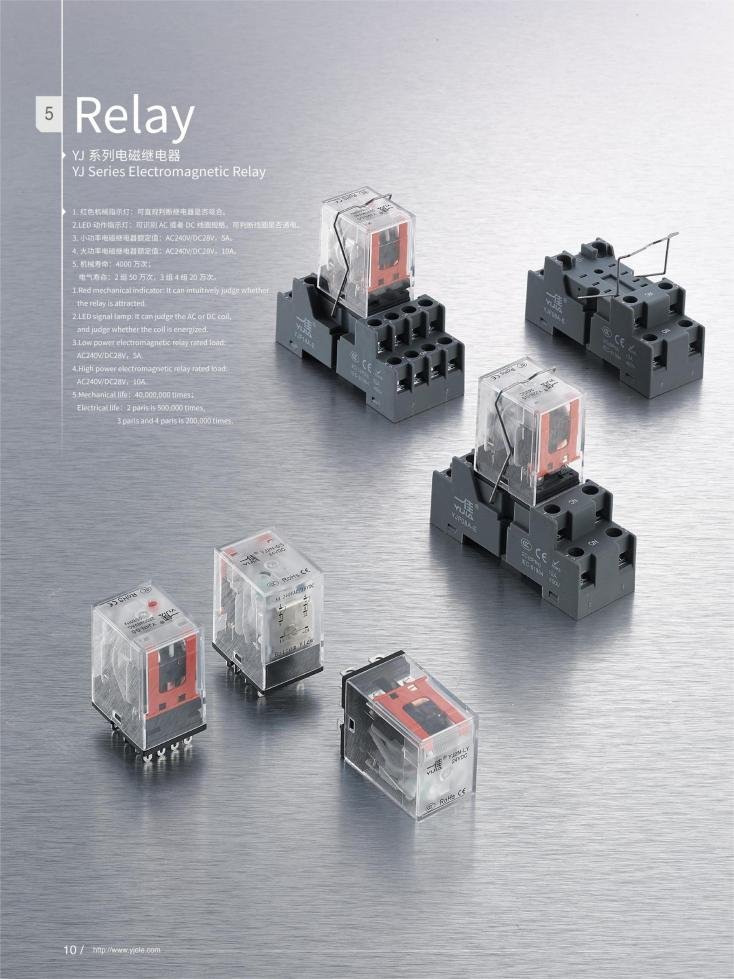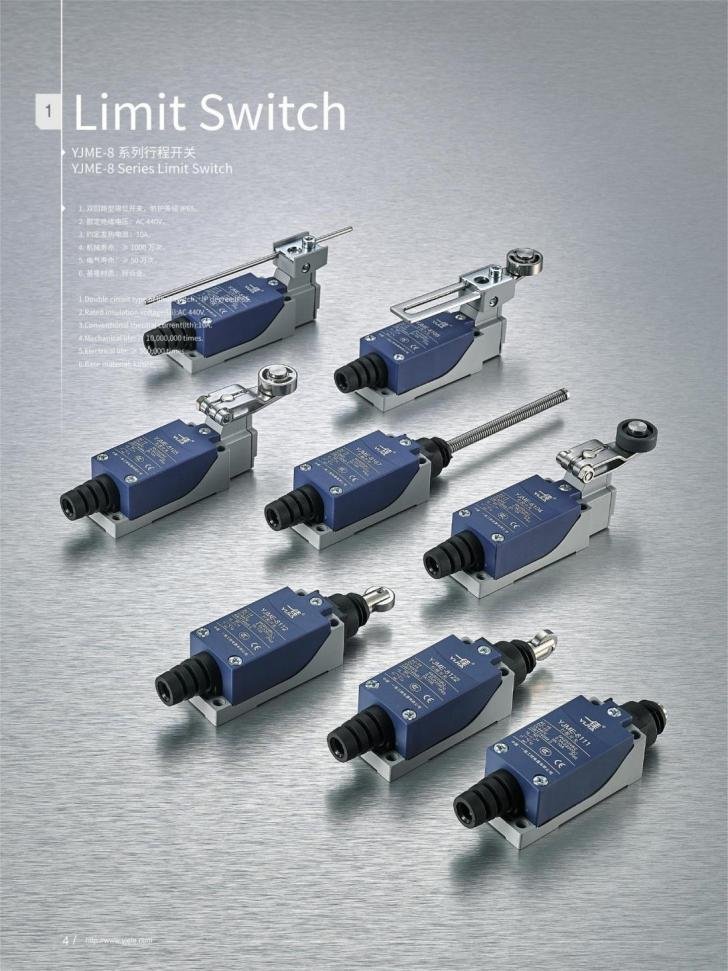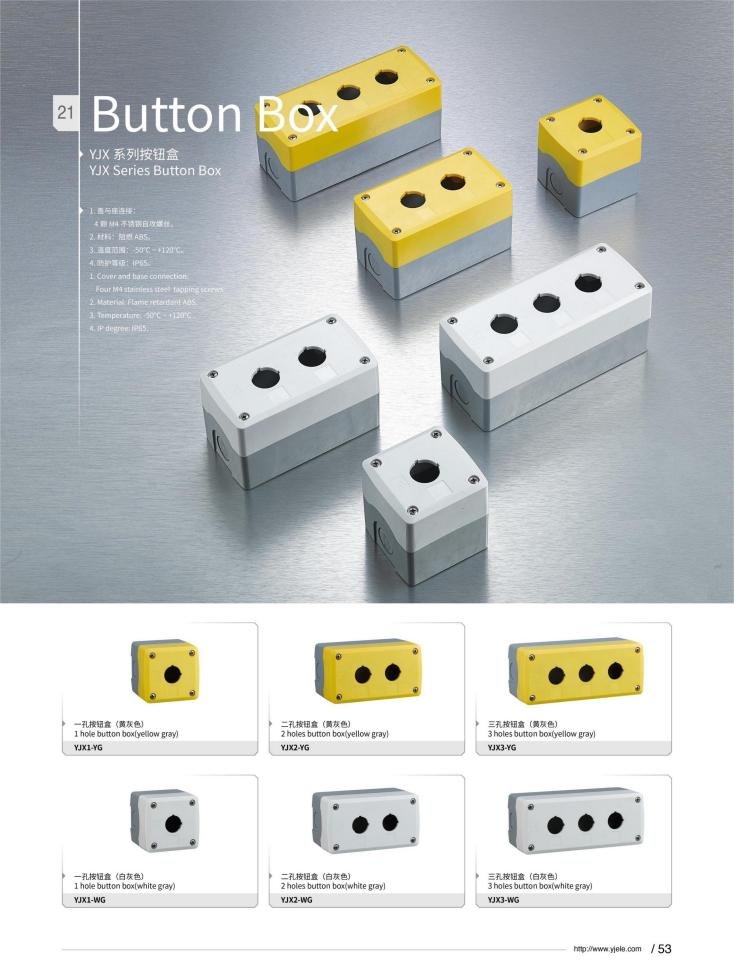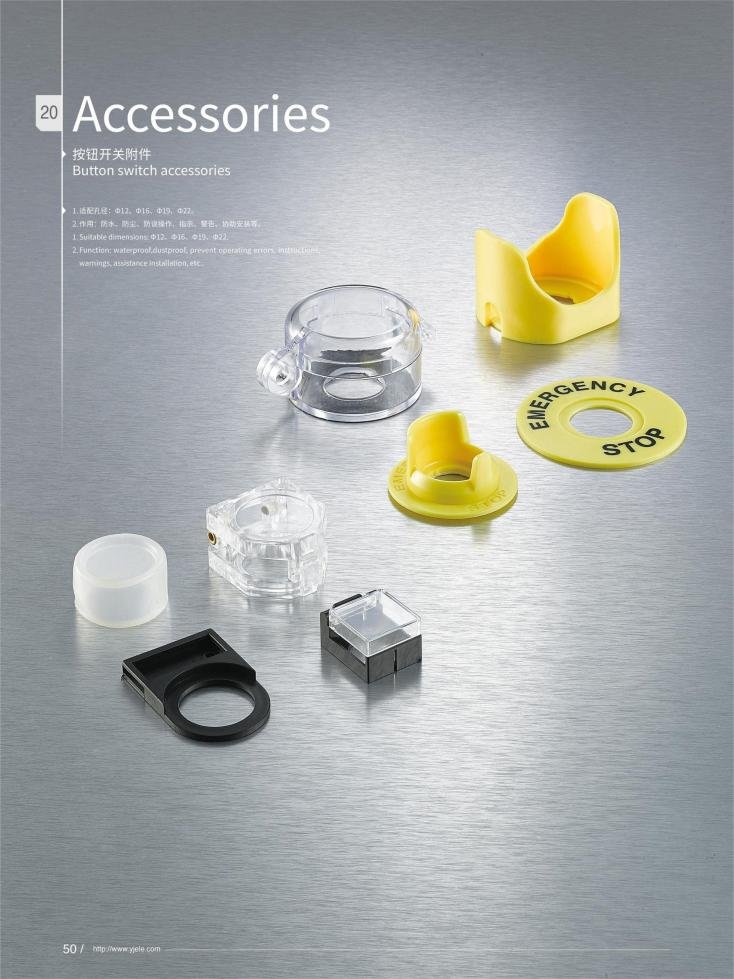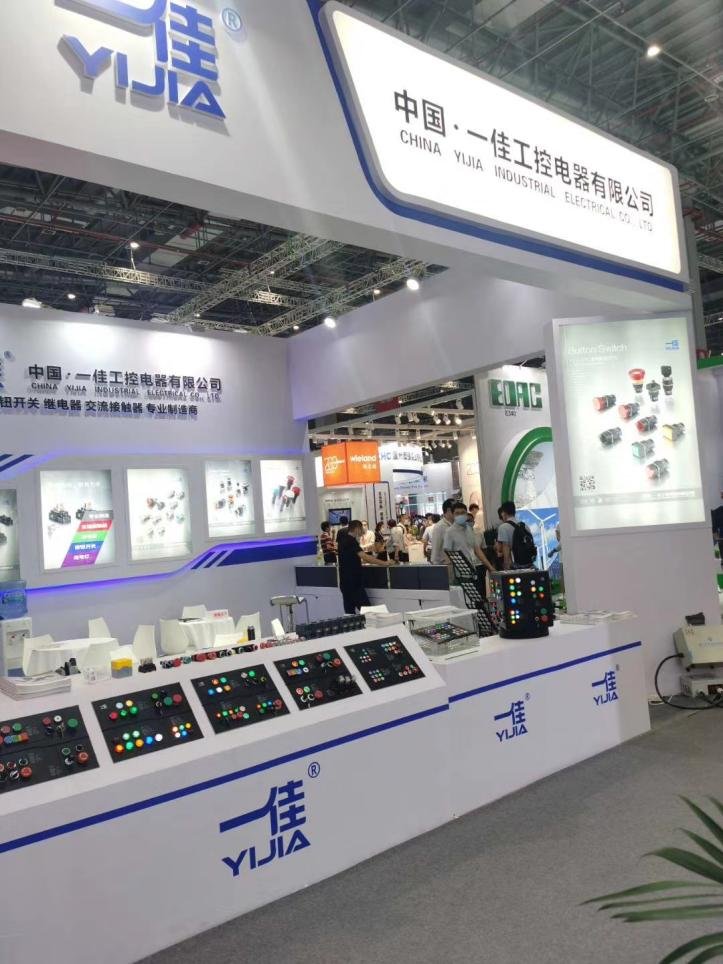Metal push button switch are essential components in modern electronic and industrial devices. Whether it’s powering a machine, operating a control panel, or activating a safety system, these switches provide durability, reliability, and precision control. In this blog, we will explore two main types: momentary metal push button switches and latching metal push button switches. Understanding their differences and where each type fits best will help businesses and designers choose the right switch for their needs.
If you’re looking for quality metal push button switches that can meet industrial standards or customized solutions, feel free to reach out and request a quote!
What is a Momentary Metal Push Button Switch?
Momentary metal push button switches activate the connected circuit only while the button is pressed. Once released, the switch returns to its original state thanks to an internal spring mechanism. This kind of switch is often called a “self-reset” or “self-recovery” switch.
Key Features:
- Temporary contact: Circuit is closed only when pressed.
- Spring return: Button bounces back immediately after release.
- Tactile feedback: Users feel a definite click or push sensation.
- Compact and quick operation
| Feature | Description | Common Usage Examples |
|---|---|---|
| Electrical state | On when pressed, off when released | Doorbells, keyboards, emergency stops |
| Action type | Momentary (brief contact) | Machine start buttons, reset buttons |
| Response time | Instantaneous | Timely control and signal triggering |
Typical Applications
Momentary switches are ideal in situations where a temporary action is required to trigger a device or function:
- Industrial equipment controls: Start, stop, or reset machinery temporarily.
- Consumer electronics: Keyboards, calculators, or game controllers.
- Safety systems: Emergency stop buttons (press to stop immediately).
- Access control: Doorbells or intercom systems.
Momentary switches are the go-to for safety-critical and transient signaling where accidental activation must be minimized.
What is a Latching Metal Push Button Switch?
Unlike momentary switches, latching or maintained metal push button switches stay in their switched state after pressing. Press once to make the circuit connected (“on”); press again to break the circuit (“off”). This toggle mechanism is perfect for longer-term control.
Key Features:
- Toggle contact: Maintains the circuit state until toggled again.
- No spring return: Button stays pressed down or popped up.
- Clear on/off position indication
- Robust for repetitive switching
| Feature | Description | Common Usage Examples |
|---|---|---|
| Electrical state | Switches between on and off with each press | Power switches, lighting controls |
| Action type | Maintained or latching switch | Elevator control panels, power buttons |
| Response time | Immediate toggle with each press | Long-term state control |
Typical Applications
Latching switches are best suited for applications where you want to keep a device powered on or off without constantly pressing the button:
- Power on/off controls: Computers, appliances, machine tools.
- Industrial operation: Motor run/stop toggle, conveyor belts.
- Lighting control: On/off switches for lamps or fixtures.
- Elevator control panels: Selecting destination floors and functions.
Latching switches offer ease of use in equipment that requires persistent activation with clear status indication.
Comparison of Momentary and Latching Metal Push Button Switches
Understanding the key differences helps choose the right switch based on operational needs and user experience:
| Aspect | Momentary Switch | Latching Switch |
|---|---|---|
| Operation | Active only while pressed | Changes and holds state after press |
| User Interaction | Hold button during activation | Press once to toggle state |
| Typical Use | Safety, reset, transient commands | Power, mode selection, long-term control |
| Safety Consideration | Default off when released (fail-safe) | State maintained until toggled again |
| Common Applications | Emergency stops, push-to-talk | Lighting, power switches, toggles |
| Mechanism | Internal spring for automatic return | Positive mechanical lock or toggle |
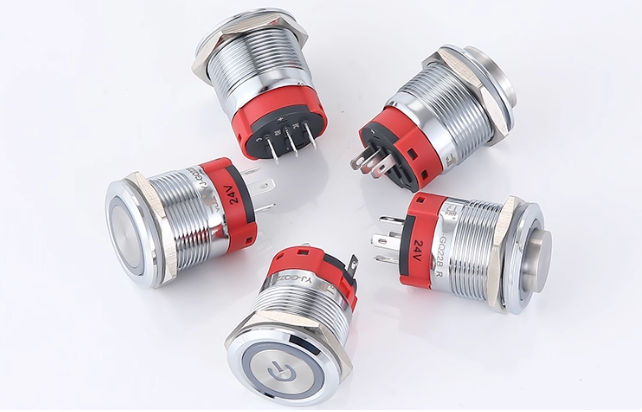

Free consultation, huge price discounts!
If you have more specific questions or need help choosing the right switch!
Other Types of Metal Push Button Switches and Functional Extensions
Beyond momentary and latching switches, metal push button switches come with several additional features and variants:
| Type | Description | Use Case Example |
|---|---|---|
| Illuminated Push Button | Built-in LED shows switch status or provides backlighting | Control panels, automotive dashboards |
| Waterproof Push Button | IP65/IP67 rated, prevents ingress of water and dust | Outdoor control equipment, marine environments |
| Anti-vandal Push Button | Rugged construction resists physical abuse | Public kiosks, ATMs, elevator rooms |
| Emergency Stop Push Button | Large red “mushroom” style button for urgent shutoff | Industrial safety systems, heavy machinery |
Choosing the right additional features depends on the environment and application requirements. For instance, outdoor equipment demands waterproof and corrosion-resistant switches, whereas public-use devices benefit from anti-vandal protection.
How to Choose the Right Metal Push Button Switch for Your Application
Selecting the perfect switch can be daunting but focusing on key factors simplifies the decision:
- Identify the required function: Momentary for temporary commands, latching for persistent on/off states.
- Consider the operating environment: Waterproof and anti-vandal for harsh or public areas.
- Review electrical parameters: Ensure voltage and current ratings match your system needs.
- Look at physical size and mounting: Panel mount, PCB mount, or surface mount options based on design.
- Evaluate visibility needs: If operation status must be visible, consider illuminated switches.
- Safety and compliance: Check certifications, especially in industrial and safety-critical applications.
Here’s a simple table to help decide:
| Application Scenario | Recommended Switch Type | Key Considerations |
|---|---|---|
| Emergency stop in machinery | Momentary metal push button | Fast action, automatic reset |
| Power toggle for device | Latching metal push button | Clear on/off state, maintains status |
| Outdoor control panel | Waterproof illuminated push button | IP67 rating, visible status |
| Public kiosk or ATM | Anti-vandal momentary/latching | High durability and tamper resistance |
Choosing between a momentary and a latching metal push button switch is crucial for ensuring the right user experience and device performance. Momentary switches excel in safety and transient controls, providing instant action that resets automatically. Latching switches offer ease for on/off toggling with clear and lasting states.
In addition, enhanced features like illumination, waterproofing, and anti-vandal design expand their usability across numerous industries from industrial machinery to public terminals. Careful selection based on application requirements, environment, and electrical specifications will help optimize product functionality, safety, and durability.
Whether upgrading your current system or designing a new product line, consider the distinct advantages of each type of metal push button switch. Feel free to reach out for tailored advice or customized switch solutions — the right push button can make all the difference!
FAQ
High-quality metal push buttons can endure over 1 million mechanical cycles and hundreds of thousands of electrical operations, ensuring years of reliable service.
Momentary switches are only active when pressed, while latching switches maintain their state until pressed again.
Common materials include stainless steel, aluminum, brass, and zinc alloy, chosen for durability and corrosion resistance.
Yes, many illuminated switches come with waterproof ratings like IP65/IP67, suitable for outdoor or harsh environments.
Match the switch’s electrical ratings with your circuit’s specifications to ensure safe and proper operation.
Generally yes, with standard panel cutouts and mounting nuts. Wiring can be quick-connect or soldered depending on the model.
Look for CE, RoHS, CCC certifications and compliance with relevant industrial standards.







